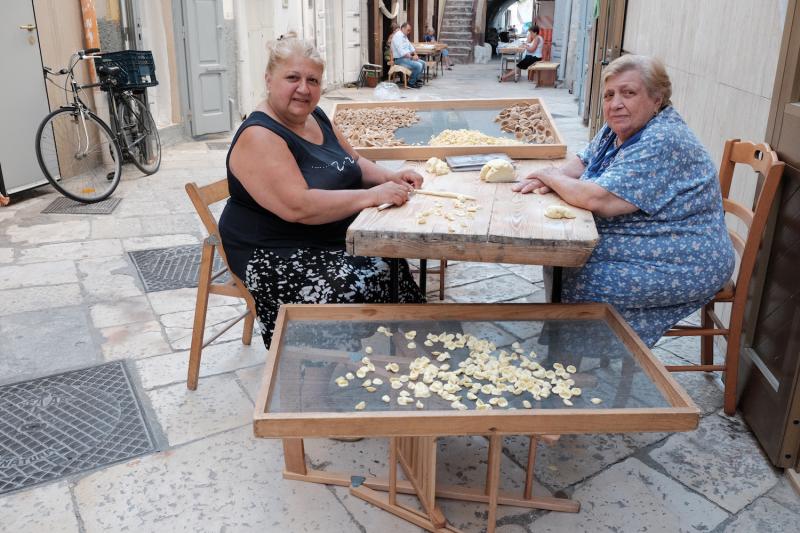There may be differences in how Italy and countries across the globe have dealt with the coronavirus pandemic this year, but one thing has brought the world together: cooking. With restaurants closed and more time spent at home, it seems like everyone has either discovered or rekindled a passion for preparing food from scratch, be it comfort cakes or multi-course meals.
When it comes to home cooking, few cultures match Italy for pure delight in anything culinary. And though many “recipes” are more rough guidelines passed down orally from generation to generation, this country of born home chefs also has a long and rich history of cookbooks. Indeed, Europe’s first cookbook was published here in 1474 and the landmark “La Scienza in Cucina e l’Arte di Mangiar Bene” (“Science in the Kitchen and the Art of Eating Well”), published by Pellegrino Artusi in 1891, is still considered one of the world’s seminal cooking tomes.
If you want to prepare authentic Italian dishes (“piatti”), there is no better source than a cookbook (“libro di cucina” or “ricettario”) written and published in Italian...though be forewarned that many of these recipe collections presume a level of kitchen skill and intuition that is far more advanced than many English-language cookbooks. In fact, one of the most common commands you’ll find in any Italian recipe (“ricetta”) is to add an ingredient or cook a concoction “quanto basta”, or “just enough”...leaving it to each individual cook to decide just how much is just enough.
Here are other important cooking terms you may come across when diving into an Italian recipe:
Verbs in the Kitchen
A recipe is basically a list of commands, so expect the verbs in any recipe to use the imperative tense (“l’imperitivo”). Generally, recipes are written in the second person plural (you all) rather than the second person singular (you).
Preparare - Prepare
Cucinare - Cook
Pulire - Clean
Sbucciare - Peel
Pelare - Pool
Mondare - Clean and/or peel, depending upon the ingredient
Affettare - Slice
Tagliare - Cut
Tagliare a dadini - Dice
Tagliare a fette - Slice
Fare bollire/Portare a ebollizione - Bring to a boil
Scaldare/Mettete a scaldare - Heat
Sbriciolare - Crumble
Grattugiare - Grate
Mantecare - Cream
Lessare/Bollire - Boil
Cuocere - Cook
Arrostire - Roast
Friggere - Fry
Unire - Add together
Amalgamare - Combine
Versare - Pour
Tostare - Toast
Dorare - Toast until golden
Rosolare - Cook (saute) until golden
Ammorbidire - Soften
Infornare - Place in oven
Grigliare - Grill or broil
Accendere - Turn on
Spegnere - Turn off
Mescolare - Mix
Tritare - Mince
Frullare - Blend
Sbattere - Beat
Rompere - Break
Separare - Separate
Montare - Whip
Impastare - Knead
Impanare - Bread
Stufare - Stew
Soffrigere - Saute
Saltare - Saute
Aggiungere - Add
Scolare - Drain
Conservare/Tenere da parte - Set aside
Buttare - Toss in/Toss out
Mettere a scaldare/Scaldare - Warm up
Sfumare - Simmer
Sciacquare - Rinse
Asciugare/Fare asciugare - Dry or absorb liquid
Impiattare - Plate
Servire - Serve
Ungere - Grease or oil
Decorare - Decorate
Cospargere/Spolverare - Sprinkle/Dust
Condire - Dress
Salare/Pepare - Salt/Pepper
Common cooking nouns:
Along with a long list of verbs, preparing a recipe requires knowing other terms from utensils and kitchen supplies to units of measure:
Un pizzico - A pinch
Una manciata - A small handful
Uno spicchio - A wedge or clove (of garlic)
Abbondante - A large amount of
Scarso - A small amount of
Frusta - Whisk
Pentola – Pot or pan
Coperchio – Lid
Padella – Frying pan
Mestolo – Ladle
Cucchiaio di legno – Wooden spoon
Colino/Scolapasta – Colander
Matterello – Rolling pin
Cavatappi – Corkscrew
Vassoio – Tray
Ciotola – Bowl
Insalatiera – Salad bowl
Posate – Silverware/cutlery
Cucchiaio – Spoon
Cucchiaino – Tea spoon
Forchetta – Fork
Coltello – Knife
Bicchiere – Glass
Piatto – Plate
Fiamma bassa - Low flame
Fiamma alta - High flame
Macinato - Ground
A scaglie - Flaked
Whether you’re trying out your nonna’s famous ragù recipe or preparing a feast from a contemporary Italian cookbook, with this list of important cooking vocabulary words, you’ll soon be a pro in the kitchen!













